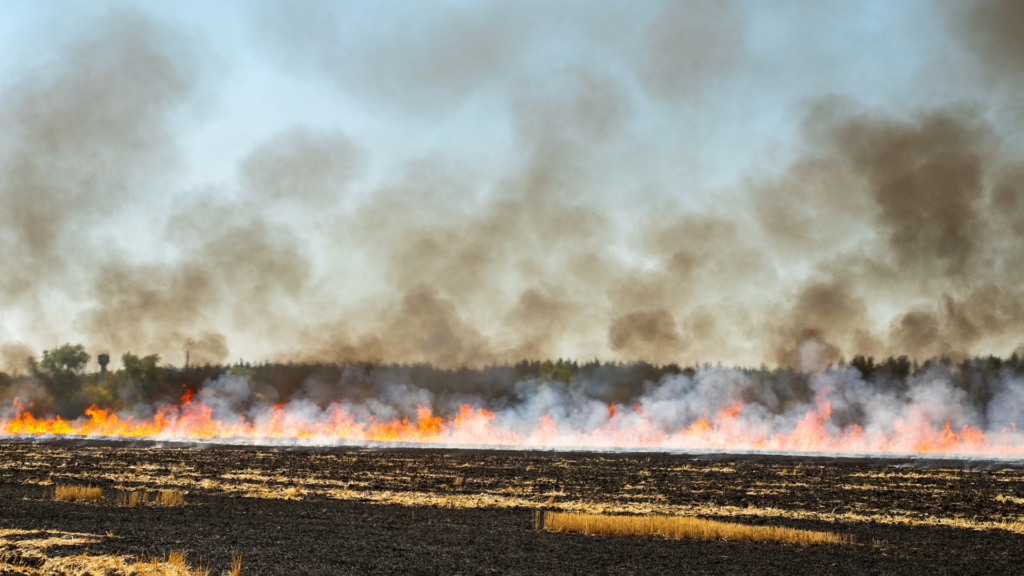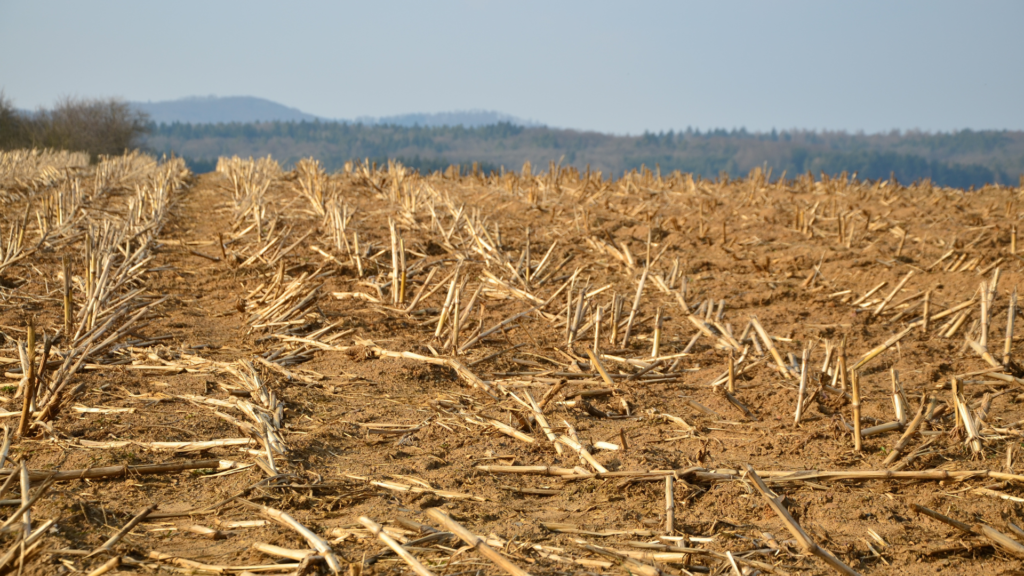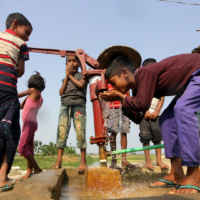EVERY year post-monsoon and as Diwali approaches, Delhiites and those living in the states around the capital begin to fear the effect of stubble burning on the air they breathe.
And every year when atmospheric pollution reaches toxic levels and urbanites choke, the discussion ensues about why this agricultural practice, which poses such severe health risks, continues unabated in rural areas.

Why is stubble burning all the rage among farmers from Punjab, Haryana and Uttar Pradesh despite its ill effects on air quality? And are there any alternatives?
What is stubble burning?
It refers to setting fire to paddy residue in order to prepare the field for the sowing of the next crop. According to a 2019 Harvard University study, the burning of paddy stubble started in the mid-1980s in Punjab after the introduction of mechanised harvesting – faster and cheaper than manual harvesting.
However, it leaves one-to-two-feet-tall paddy residue which takes over a month to decompose. Farmers cannot wait for this long to sow wheat, the winter or rabi crop. Also, as paddy stubble is hard, has low calorific value and high silica content, it cannot be used as animal fodder. Hence, farmers burn it to prepare the soil for wheat.
Why paddy residue is set on fire
Post the Green Revolution in India, paddy cultivation increased in Punjab, Haryana and western Uttar Pradesh. It was further popularised by the procurement of paddy by the government at MSP (minimum support price) providing an assured income to farmers. However, this also depleted the water table.

To preserve the shrinking water table, the government of Punjab enacted the Punjab Preservation of Subsoil Water Act, 2009 forcing farmers to delay paddy transplantation (from seeds sown in nurseries), until a stipulated date in June. Delayed sowing leads to delayed harvesting and thereby leaving very little time with farmers to ready the soil for planting wheat. Hence burning stubble seems to be a quicker, easier and cost-effective solution for farmers.
Alternatives to stubble burning
Encouraging crop diversity: Kheti Virasat Mission, an NGO that works towards promoting organic farming in Punjab, and Centre for Sustainable Agriculture, Hyderabad advocate that it is important to break the paddy-wheat crop cycle and promote sustainable cultivation through crop diversification.
However, the challenge herein is that procurement at MSP is confined to wheat and rice, and not for pulses, vegetables, fruits or other crops. The organisations advocate that the government must incentivise farmers to cultivate other crops by assuring guaranteed purchase in case of market exigencies.

Adopting technology: The state governments of Punjab, Haryana and Delhi, along with private organisations like the Confederation of Indian Industries have highlighted the need for cost-effective technology alternatives. Direct seeding of wheat (using Happy Seeders) without removing paddy stubble and cutting and mixing paddy stubble with soil using rotavators and mulchers are some of the alternatives to stubble burning. However, there is often a shortage of equipment. Also, such techniques do not work for paddy stubble, as it takes more than one month to decompose and mix with soil, adversely affecting the wheat yield.
Both Punjab and Haryana governments have set up custom hiring centres to provide equipment on a rental basis to farmers who cannot afford the expensive machinery for crop residue management. However, the centres face inherent financial and capacity constraints. The capital cost requirement is significant even after subsidy.
Punitive measures: With the blanket ban on stubble burning by the National Green Tribunal, governments have resorted to punitive measures such as charging hefty fines. These could likely become counter-productive measures harassing farmers, already reeling under the burden of high input costs and labour shortages.
Encourage alternate use of paddy stubble: making paper and packing materials, generating energy, using in cement plants, and making compost. Hay Baler machines are used to compress crop residues into bales. However, they are very expensive.
Awareness campaigns and behavioural change: NGOs and social science researchers also emphasise the need for conducting awareness and behavioural interventions of the farming community for discouraging stubble burning. However, awareness drives themselves are not sufficient. They must be complemented by disincentivizing stubble burning and providing alternative solutions that are affordable and accessible.
Established in 2000, Give is the largest and most trusted giving platform in India. Our community of 2.6M+ donors have supported 3,000+ nonprofits, impacting 15M+ lives across India.
Discover more from give.do
Subscribe to get the latest posts to your email.





